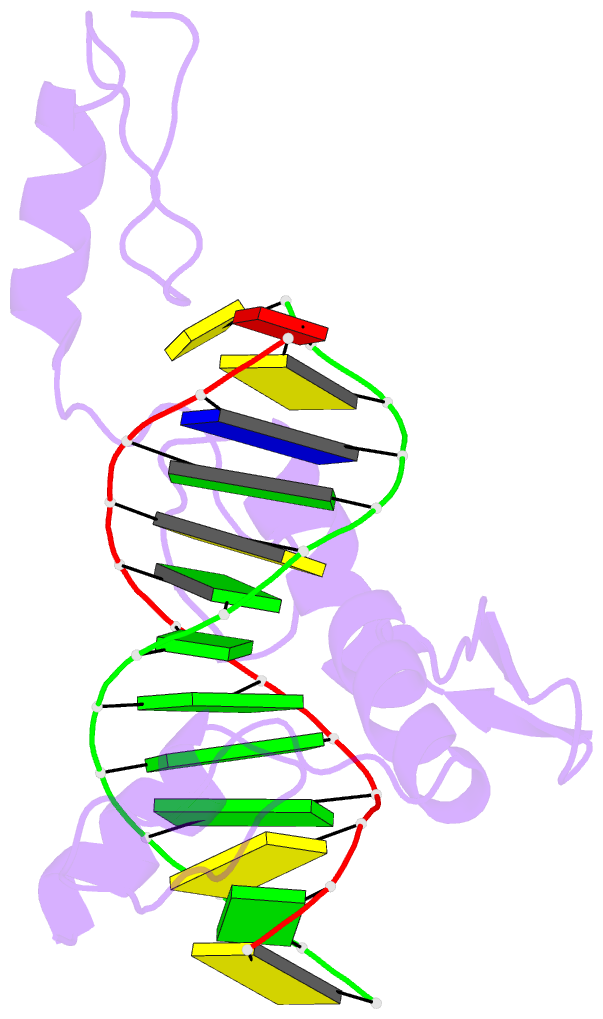Summary information and primary citation
- PDB-id
-
2prt;
SNAP-derived features in text and
JSON formats
- Class
- transcription-DNA
- Method
- X-ray (3.15 Å)
- Summary
- Structure of the wilms tumor suppressor protein zinc
finger domain bound to DNA
- Reference
-
Stoll R, Lee BM, Debler EW, Laity JH, Wilson IA, Dyson
HJ, Wright PE (2007): "Structure
of the Wilms tumor suppressor protein zinc finger domain
bound to DNA." J.Mol.Biol.,
372, 1227-1245. doi: 10.1016/j.jmb.2007.07.017.
- Abstract
- The zinc finger domain of the Wilms tumor suppressor
protein (WT1) contains four canonical Cys(2)His(2) zinc
fingers. WT1 binds preferentially to DNA sequences that are
closely related to the EGR-1 consensus site. We report the
structure determination by both X-ray crystallography and
NMR spectroscopy of the WT1 zinc finger domain in complex
with DNA. The X-ray structure was determined for the
complex with a cognate 14 base-pair oligonucleotide, and
composite X-ray/NMR structures were determined for
complexes with both the 14 base-pair and an extended 17
base-pair DNA. This combined approach allowed unambiguous
determination of the position of the first zinc finger,
which is influenced by lattice contacts in the crystal
structure. The crystal structure shows the second, third
and fourth zinc finger domains inserted deep into the major
groove of the DNA where they make base-specific
interactions. The DNA duplex is distorted in the vicinity
of the first zinc finger, with a cytidine twisted and
tilted out of the base stack to pack against finger 1 and
the tip of finger 2. By contrast, the composite X-ray/NMR
structures show that finger 1 continues to follow the major
groove in the solution complexes. However, the orientation
of the helix is non-canonical, and the fingertip and the N
terminus of the helix project out of the major groove; as a
consequence, the zinc finger side-chains that are commonly
involved in base recognition make no contact with the DNA.
We conclude that finger 1 helps to anchor WT1 to the DNA by
amplifying the binding affinity although it does not
contribute significantly to binding specificity. The
structures provide molecular level insights into the
potential consequences of mutations in zinc fingers 2 and 3
that are associated with Denys-Drash syndrome and nephritic
syndrome. The mutations are of two types, and either
destabilize the zinc finger structure or replace key base
contact residues.





